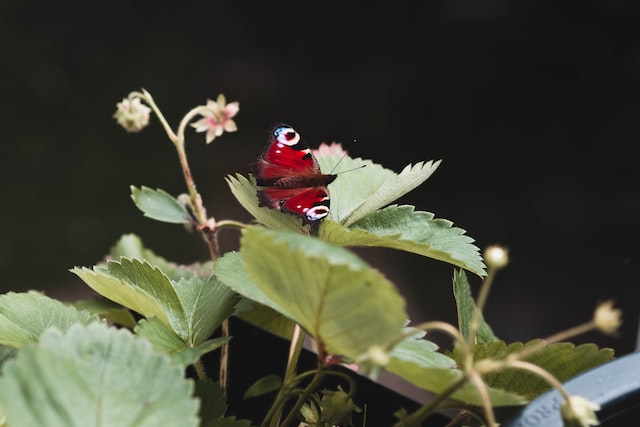Whether you’re trying to grow strawberries for the first time or you have years of experience, there are many things you need to know to grow healthy strawberries. For starters, strawberries need ample sunlight to produce fruits. This means you need to place them in a sunny spot outside your home. You can also use a plant light, such as LED, to provide artificial light.
Depending on your growing conditions and the type of strawberry you choose to grow, the plants may take several months to reach their full height. However, with proper care, they can produce fruit for up to five years.
When planting strawberries, you will need to choose a container that has enough soil depth to allow the roots to grow properly. The depth should range from 12 to 14 inches. Plants in containers with shallower depths often end up with weak root systems, which cause the plant to rot.

Photo by Adalia Botha on Unsplash
Once you have a suitable container, you can begin planting the seeds. Keep in mind that strawberries are heavy feeders. They need plenty of nitrogen to support their foliage growth. In addition, they require a pH level of about 5.5-7, and they like moist soil that is rich in humus.
When you’re ready to transplant the seedlings, make sure they’re a couple of inches tall. After they’ve grown for a few weeks, you can transfer them to a larger pot. As a rule of thumb, everbearing strawberries can be harvested in the first growing season, while June bearing strawberries are ready to be picked about four to six weeks after flowering.
Once you’ve set up the plant, you can start using fertilizer. Use a soluble 20-20-20 fertilizer, and mix it into the hole where the transplant will go. Fertilizer should be added about every month or so to the growing area. Avoid overfeeding, as this can lead to deficient growth.
Watering is also important. Once the plant is established, you can lower the amount of water you give it. Excessive watering can cause the roots to rot, which can shorten the plant’s lifespan. If you’re planning to plant your strawberries outdoors, you can get a head start by putting them in a refrigerator for a few weeks to simulate winter conditions.
Once the plant has produced fruit, you should trim the plant to protect the leaves. This helps the plant focus its energy on the roots. Strawberrys will not grow if the crown is buried.

Photo by Leen on Unsplash
Although you may be tempted to pick up some organic strawberries, commercially grown inorganic fruit is often sprayed with chemicals to discourage regrowth. Since it’s hard to grow strawberries from scraps, you’ll need to buy them from a farm or local garden store.
Finally, be aware of mild freezes. If they happen, you will want to cover the plants with mulch or straw. These will help to keep the plants warm and prevent weeds from taking hold.
Aside from harvesting, it’s important to watch out for pests. Some of the most common are insects, lygus bugs, and birds. These insects can attack your strawberry plants, causing them to die off. Luckily, you can reduce the effects of these pests by spacing your strawberries correctly. By doing so, you will limit the spread of diseases and other pests.
